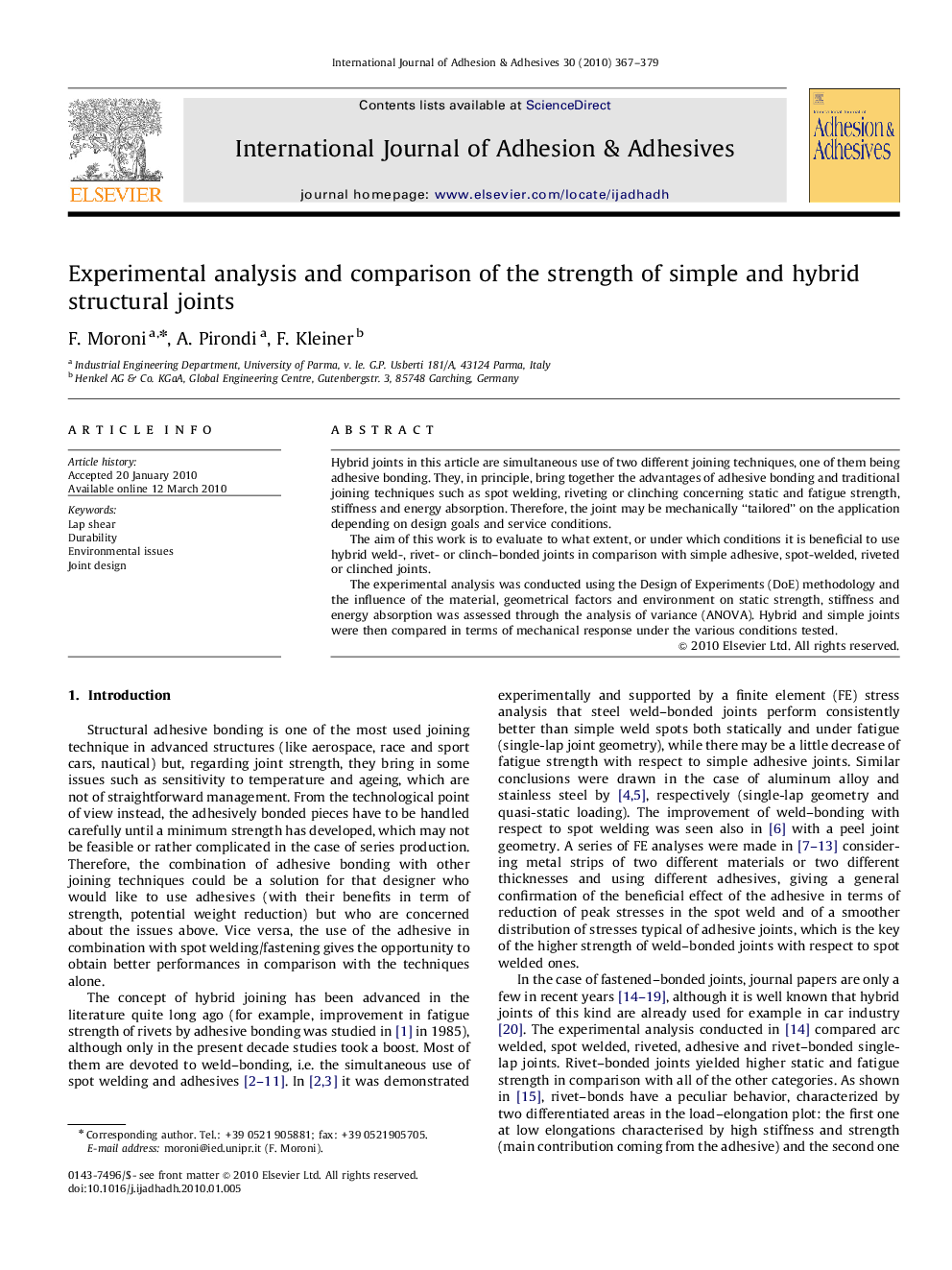| Article ID | Journal | Published Year | Pages | File Type |
|---|---|---|---|---|
| 776437 | International Journal of Adhesion and Adhesives | 2010 | 13 Pages |
Hybrid joints in this article are simultaneous use of two different joining techniques, one of them being adhesive bonding. They, in principle, bring together the advantages of adhesive bonding and traditional joining techniques such as spot welding, riveting or clinching concerning static and fatigue strength, stiffness and energy absorption. Therefore, the joint may be mechanically “tailored” on the application depending on design goals and service conditions.The aim of this work is to evaluate to what extent, or under which conditions it is beneficial to use hybrid weld-, rivet- or clinch–bonded joints in comparison with simple adhesive, spot-welded, riveted or clinched joints.The experimental analysis was conducted using the Design of Experiments (DoE) methodology and the influence of the material, geometrical factors and environment on static strength, stiffness and energy absorption was assessed through the analysis of variance (ANOVA). Hybrid and simple joints were then compared in terms of mechanical response under the various conditions tested.
